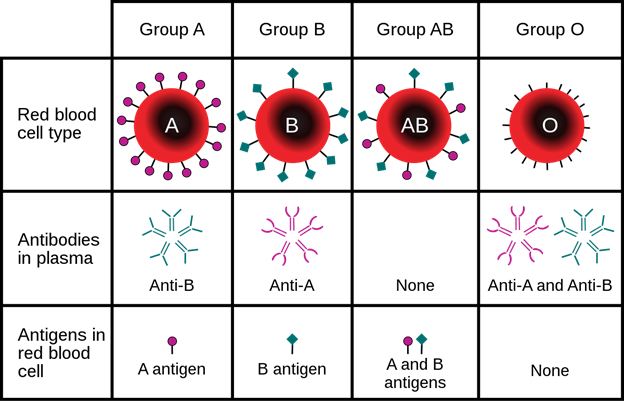Erythroblastosis fetalis may occur in:
A second Rh-negative fetus developing in an Rh-negative woman.
A second Rh-positive fetus developing in an Rh-negative woman.
A first Rh-positive fetus developing in an Rh-negative woman.
A first Rh-negative fetus developing in an Rh-negative woman.
The Correct Answer is B
This is because erythroblastosis fetalis, also known as hemolytic disease of the newborn, is caused by Rh incompatibility between the mother and the fetus.
Rh incompatibility occurs when a Rh-negative mother is impregnated by a Rh-positive father, resulting in a Rh-positive fetus.
The mother’s immune system can detect the Rh factor on the fetus’s red blood cells as foreign and produce antibodies against them.
These antibodies can cross the placenta and destroy the fetus’s red blood cells, causing anemia, jaundice, edema, and other complications.
Choice A is wrong because a second Rh-negative fetus developing in an Rh-negative woman will not cause erythroblastosis fetalis.
The mother and the fetus have the same Rh factor, so there is no immune reaction.
Choice C is wrong because a first Rh-positive fetus developing in an Rh-negative woman will not cause erythroblastosis fetalis.
The mother’s immune system will not produce antibodies against the Rh factor until after the first exposure to it, which usually happens during delivery.
Therefore, the first pregnancy is usually unaffected.
Choice D is wrong because a first Rh-negative fetus developing in an Rh-negative woman will not cause erythroblastosis fetalis.
The mother and the fetus have the same Rh factor, so there is no immune reaction.
The normal range of red blood cell count for newborns is 4.1 to 6.1 million cells per microliter of blood.
The normal range of bilirubin level for newborns is 0.3 to 1.9 milligrams per deciliter of blood.
Nursing Test Bank
Naxlex Comprehensive Predictor Exams
Related Questions
Correct Answer is C
Explanation
Basophils usually account for the smallest percentage of leukocytes in a blood sample. Basophils are a type of white blood cell that is involved in allergic reactions and inflammation.
Choice A is wrong because eosinophils are not the least common type of leukocyte.
Eosinophils are another type of white blood cell that is involved in allergic responses and parasitic infections.
They typically make up about 1-6% of the total leukocyte count.
Choice B is wrong because monocytes are not the least common type of leukocyte.
Monocytes are a type of white blood cell that can differentiate into macrophages and dendritic cells, which are important for phagocytosis and antigen presentation.
They typically make up about 2-10% of the total leukocyte count.
Choice D is wrong because neutrophils are not the least common type of leukocyte.
Neutrophils are a type of white blood cell that are the first responders to bacterial infections and tissue damage.
They typically make up about 55-70% of the total leukocyte count.
Correct Answer is D
Explanation
This is because blood type AB has both A and B antigens on the surface of red blood cells.

Antigens are protein molecules that can trigger an immune response if they are foreign to the body.
Choice A is wrong because antigen B only is present in blood type B.
Choice B is wrong because neither antigens A nor B are present in blood type O.
Choice C is wrong because antigen A only is present in blood type A.
Normal ranges for blood types vary by population, but according to the NHS, about 3% of people in the UK have blood type AB.
Whether you are a student looking to ace your exams or a practicing nurse seeking to enhance your expertise , our nursing education contents will empower you with the confidence and competence to make a difference in the lives of patients and become a respected leader in the healthcare field.
Visit Naxlex, invest in your future and unlock endless possibilities with our unparalleled nursing education contents today
Report Wrong Answer on the Current Question
Do you disagree with the answer? If yes, what is your expected answer? Explain.
Kindly be descriptive with the issue you are facing.
